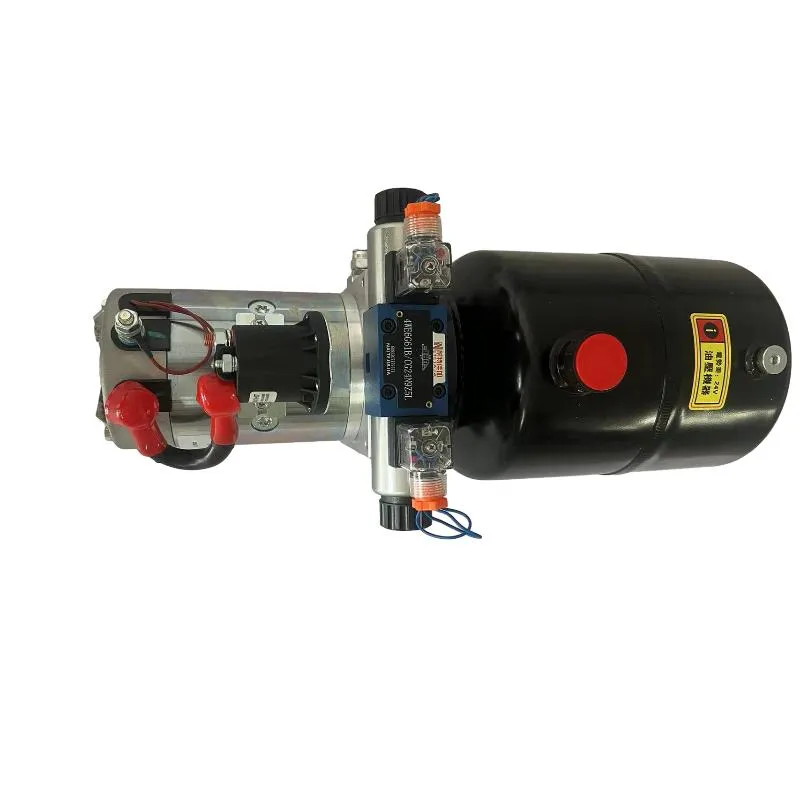Oct . 19, 2024 23:34 Back to list
welding hydraulic cylinder product
Welding Hydraulic Cylinder An Essential Component in Modern Machinery
Welding hydraulic cylinders have become a fundamental component in various industrial applications, playing a crucial role in the operation of machinery and equipment across multiple sectors. These cylinders are essential for lifting, pushing, and pulling heavy loads and are employed in construction, manufacturing, and automotive industries. Understanding their structure, functionality, and advantages can provide insights into their importance in modern engineering.
What is a Hydraulic Cylinder?
A hydraulic cylinder is a mechanical actuator that converts hydraulic energy into mechanical force. It consists of a cylindrical barrel, a piston, and a rod. The hydraulic fluid, typically oil, is directed into the cylinder, creating pressure that pushes the piston. This action generates linear motion, allowing the rod to extend or retract based on the fluid's flow direction. The design of the hydraulic cylinder enables it to handle significant loads, making it ideal for heavy-duty applications.
The Role of Welding in Hydraulic Cylinders
Welding is a critical process in the fabrication of hydraulic cylinders. It is primarily used to join various metal components, ensuring a strong and leak-proof assembly. The parts of a hydraulic cylinder, such as the barrel, end caps, and piston rods, are often made from high-strength steel or other alloys to withstand high pressure and stress. Welding these components together requires precise techniques to maintain the integrity of the materials and ensure that the cylinder can operate under extreme conditions.
The types of welding commonly used in hydraulic cylinder manufacturing include
1. MIG Welding (Metal Inert Gas) Ideal for thin materials, MIG welding provides a strong and clean result, which is essential for the components of hydraulic cylinders, where strength and seal integrity are paramount.
2. TIG Welding (Tungsten Inert Gas) This technique offers greater control over the welding process, making it suitable for high-precision applications. TIG welding produces clean and aesthetically pleasing welds, often necessary in visible components.
3. Stick Welding (Shielded Metal Arc Welding) Although less common for hydraulic cylinders due to the need for cleaner welds, stick welding is still used in some cases where portability is necessary.
Benefits of Welding in Hydraulic Cylinder Production
- Increased Strength and Durability Proper welding techniques enhance the joint strength of the cylinder components, allowing them to withstand high pressures and loads without failure
.welding hydraulic cylinder product

- Leak Prevention Hydraulic systems require high pressure to operate efficiently. Quality welding minimizes the risk of leaks, which can lead to mechanical failures and safety hazards.
- Customizability Welding allows for greater flexibility in design, enabling manufacturers to create custom hydraulic cylinders tailored to specific applications and requirements.
- Cost-Effectiveness While welding may represent an additional manufacturing step, it often results in lower long-term costs due to the reduced risk of failures and maintenance needs.
Applications of Welding Hydraulic Cylinders
The applications of welding hydraulic cylinders are vast and varied. They are predominantly found in
- Construction Equipment Hydraulic cylinders power excavators, bulldozers, and cranes, providing the lifting and digging force necessary for building infrastructure.
- Manufacturing Machinery These cylinders are integral to assembly lines, where they actuate presses, lifts, and robotics, enhancing efficiency and productivity.
- Automotive Industry In automotive manufacturing and repair, hydraulic cylinders are used in car lifts and assembly processes, streamlining operations and promoting safety.
- Agricultural Equipment Tractors and harvesters utilize hydraulic cylinders for various functions, from lifting and lowering equipment to steering and braking systems.
Conclusion
Welding hydraulic cylinders remain a vital component in the machinery that drives today's industries. Through advanced welding techniques, manufacturers can produce stronger, more reliable cylinders that enhance machine efficiency and safety. As technology progresses, the quality and performance of hydraulic cylinders will continue to improve, further solidifying their role in the modern industrial landscape. Whether lifting heavy loads on a construction site or powering manufacturing equipment, the importance of welding hydraulic cylinders cannot be overstated.
-
Fork Lift Power Units - Hebei Shenghan | Efficiency, Reliability
NewsJul.13,2025
-
1.5-Ton Turbocharged Cylinder-Hebei Shenghan|Hydraulic Solution,Energy Efficiency
NewsJul.13,2025
-
Auto Hoist Power Units-Hebei Shenghan|Efficiency&Industrial Lifting
NewsJul.13,2025
-
Double Acting Power Units-Hebei Shenghan|Hydraulic Solutions,Industrial Efficiency
NewsJul.13,2025
-
1.5 Ton Lifting Cylinder 70/82-40-290-535 - High-Performance Hydraulic Solution | Hebei Shenghan
NewsJul.13,2025
-
Fork Lift Power Units - Hebei Shenghan | Efficiency&Reliability
NewsJul.13,2025
